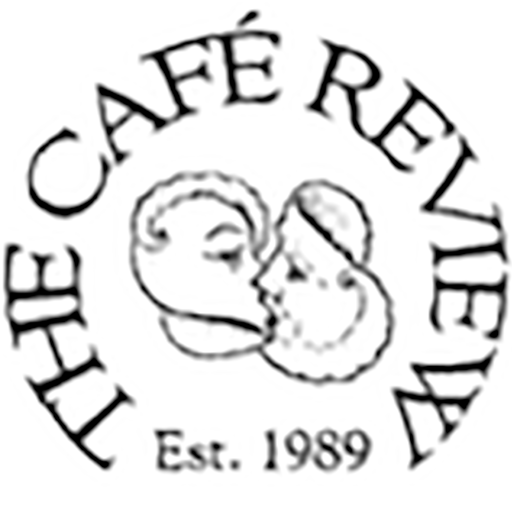Café Review 2015 Fall Issue – Special Tribute to Sumac Magazine
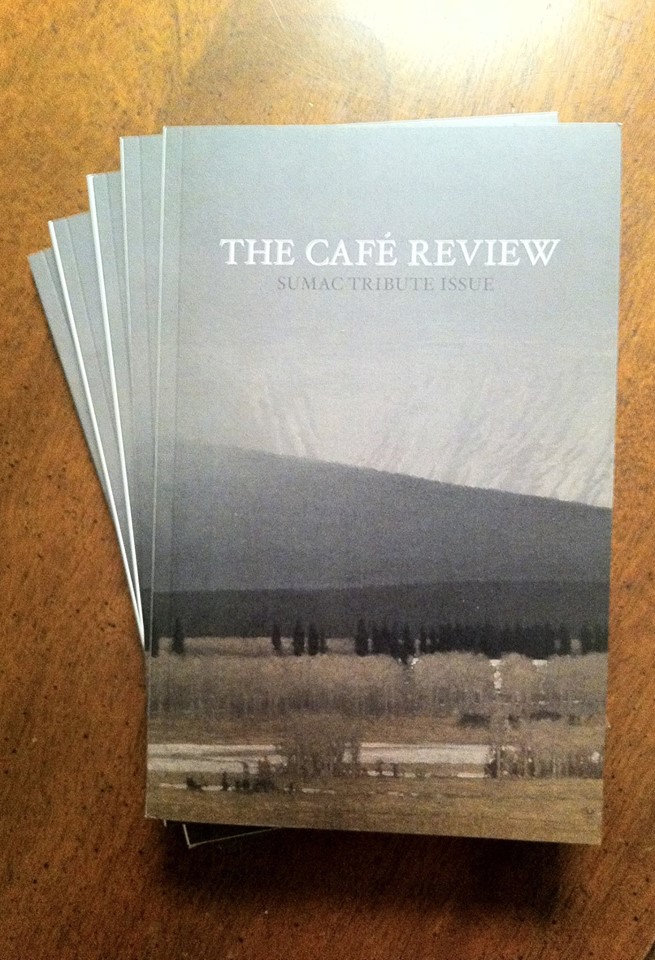
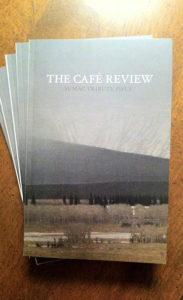
A Special Tribute to Sumac Magazine
A national literary journal under the Sumac Press banner, Sumac first appeared out of Fremont, Michigan in the winter of 1968. Co–edited by Dan Gerber and Jim Harrison, the journal evolved into nine volumes, the final issue ending a monumentally significant literary evolution–revolution in the fall of 1971. They were not slim volumes. Those nine volumes produced a total of roughly 1,386 printed pages. During that same period of time they also published a number of poetry books by various poets.
The first installment featured mostly poems, one “fictitious essay,” and a 45 page critical prose meditation by Robert Duncan. By the time the ninth volume appeared, Sumac: An Active Anthology, had expanded to include book reviews, more essays, beautifully composed and printed black–and–white photographs (many of them shot by Dan Gerber), and fiction. Thomas McGuane was brought on board to become fiction editor effective with the final six issues.
Sumac was, by turns, precocious, fiercely independent, and uncompromising in the material it chose to print. The editors were not beholden to any literary fad, trend, or poetry school — east coast or west coast. They democratically chose to include a rather large selection of work from what one editor referred to as “the flyover states.” They were by no means geographically or stylistically elitist.
Obviously long out of print, all nine highly collectible volumes may be difficult to find and not easily affordable to most of us. However, there is an anthology that is still in print. The Sumac Reader, edited by Joseph Bednarik, is available to order online or from what remains of a dwindling population of actual bookstores. The Sumac Reader features a well–chosen selection of diverse talent from the original run of Sumac and was first published in 1997 by Michigan State University Press.
W.A.
Our Fall 2015 Special Tribute Issue to Sumac Magazine is now available featuring poetry by Floyce Alexander, Carol Bachofner, George Bowering, Joseph Bruchac, Clayton Eshleman, Paul Fericano, Dan Gerber, Jim Harrison, Max Hjortsberg, Richard Jarrette, Gerard Malanga, Rebecca Newth, Sharon Olinka, Paul Pines, George Quasha, Jerome Rothenberg, Christian Teresi, Robert VanderMolen, Diane Wakoski and Diane Wald as well as artwork from Russell Chatham and Jack Richard Smith.
Café Review 2015 Summer Issue
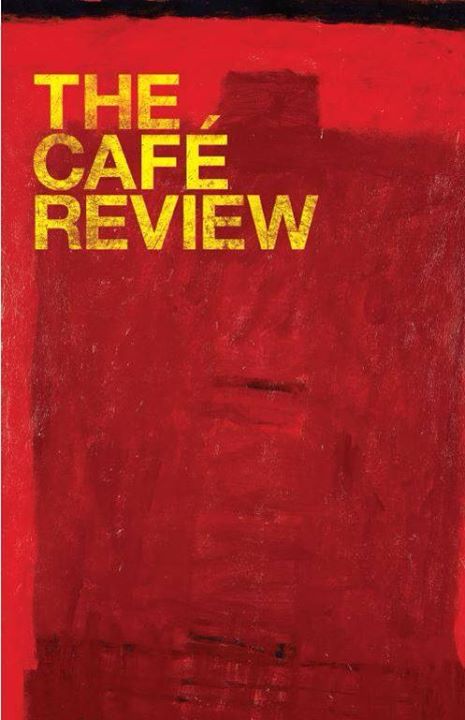
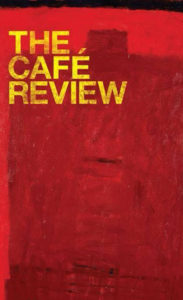
Our Summer 2015 Issue is now available featuring poetry by Sarah Anderson, Michael Biehl, Molly M. Caldwell, Kathleen Clancy, Philip Dacey, Mark DeCarteret, André T. Demers, Eric Forsbergh, Ceridwen Hall, Bruce Holsapple, Pippa Little, John Lorence, Mark Parsons, Ronald J. Pelias, George Repp, James Rioux, Annie Stenzel, S Stephanie, Tim Suermondt and Marc Swan. The issue features artwork from Brett Newburn, Elizabeth Ostrander and Marc Shanker, reviews by Jefferson Navicky, Kate Partridge and Julie Poitras Santos.
Café Review 2015 Spring Issue
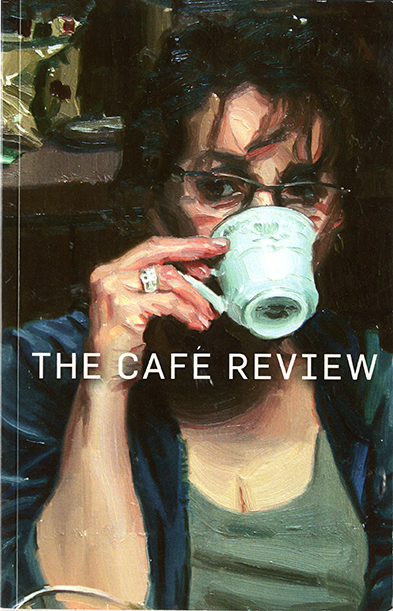
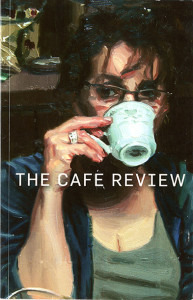
Our Spring 2015 Issue is now available featuring poetry by Ron Androla, Michael Bove, Michael Estabrook, Shana Genre, Gerard Grealish, Gerald Locklin, Donna J. Long, Jefferson Navicky, normal, Suzanne Osborne, Martin Ott, Mike Pulley, Jennifer Raha, Larry Schug, Roger Bernard Smith andSandy Weisman.
The issue features artwork from Andrew Abbott, Wayne Atherton and Michael De Brito, reviews by Leigh Donaldson, Andrew Purcell and Mark Schorr and an interview with Gerald Locklin by Kevin Sweeney.
Café Review 2015 Winter Issue
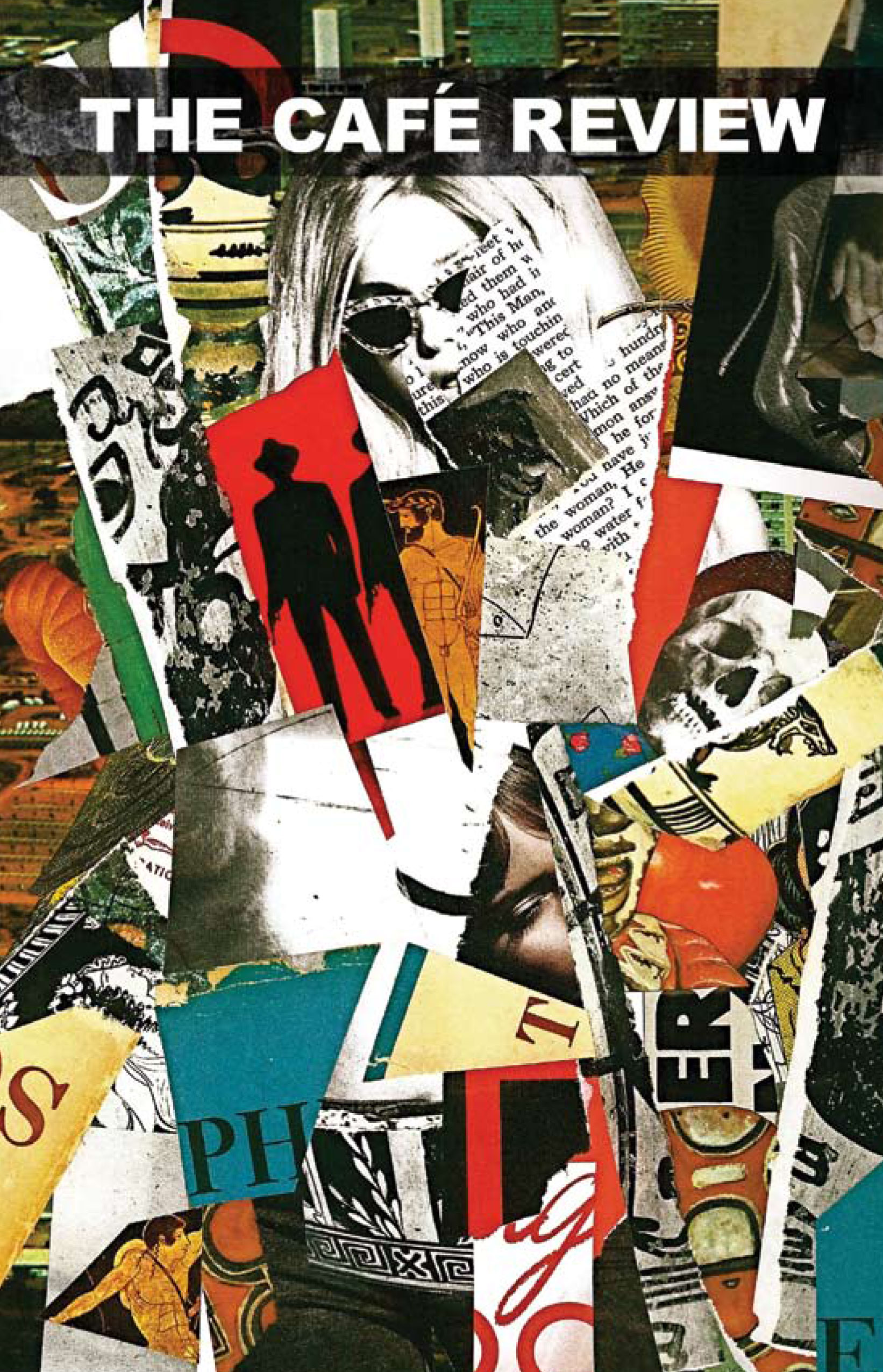
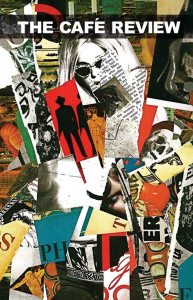
In Memoriam
Jim Koller
May 30, 1936 – December 10, 2014
Our Winter 2015 Issue is now available featuring poetry by Doug Anderson, John Blair, Marcia F. Brown, Douglas K. Currier, Craig Evenson, Leonore Hildebrandt, Didi Jackson, Major Jackson, M. P. Jones IV, Robert Kennedy, Greg McBride, Wang Ping, Kevin Rabas, Tom Saya, Adam Scheffler, Rachel F. Seidman, G. H. Smith, Kevin Sweeney and Mimi White.
The issue features artwork from Charles Farrell and Kate Knox, reviews by Megan Grumbling, Cathleen Miller and Julie Poitras Santos and an interview with Wang Ping by Timothy Gillis.

